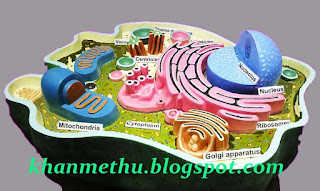Agnatha : Class of Vertibbrata (Chordata) Description with photos.
Agnatha: Agnatha is a superclass of jawless fish in the phylum Chordata, subphylum Vertebrata, consisting of both present and extinct species. The group excludes all vertebrates with jaws, known as gnathostomes.
The agnathans as a whole are paraphyletic, because most extinct agnathans belong to the stem group of gnathostomes. Recent molecular data, both from rRNA and from mtDNA as well as embryological data strongly supports the hypothesis that living agnathans, the cyclostomes, are monophyletic.
The oldest fossil agnathans appeared in the Cambrian, and two groups still survive today: the lampreys and the hagfish, comprising about 120 species in total. Hagfish are considered members of the subphylum Vertebrata, because they secondarily lost vertebrae; before this event was inferred from molecular and developmental data, the group Craniata was created by Linnaeus to reference hagfish plus vertebrates. In addition to the absence of jaws, modern agnathans are characterised by absence of paired fins; the presence of a notochord both in larvae and adults; and seven or more paired gill pouches. Lampreys have a light sensitive pineal eye. All living and most extinct Agnatha do not have an identifiable stomach or any appendages. Fertilization and development are both external. There is no parental care in the Agnatha class. The Agnatha are ectothermic or cold blooded, with a cartilaginous skeleton, and the heart contains 2 chambers.
While a few scientists still regard the living agnathans as only superficially similar, and argue that many of these similarities are probably shared basal characteristics of ancient vertebrates, recent classifications clearly place hagfish , with the lampreys as being more closely related to each other than either is to the jawed fishes.
The agnathans as a whole are paraphyletic, because most extinct agnathans belong to the stem group of gnathostomes. Recent molecular data, both from rRNA and from mtDNA as well as embryological data strongly supports the hypothesis that living agnathans, the cyclostomes, are monophyletic.
The oldest fossil agnathans appeared in the Cambrian, and two groups still survive today: the lampreys and the hagfish, comprising about 120 species in total. Hagfish are considered members of the subphylum Vertebrata, because they secondarily lost vertebrae; before this event was inferred from molecular and developmental data, the group Craniata was created by Linnaeus to reference hagfish plus vertebrates. In addition to the absence of jaws, modern agnathans are characterised by absence of paired fins; the presence of a notochord both in larvae and adults; and seven or more paired gill pouches. Lampreys have a light sensitive pineal eye. All living and most extinct Agnatha do not have an identifiable stomach or any appendages. Fertilization and development are both external. There is no parental care in the Agnatha class. The Agnatha are ectothermic or cold blooded, with a cartilaginous skeleton, and the heart contains 2 chambers.
While a few scientists still regard the living agnathans as only superficially similar, and argue that many of these similarities are probably shared basal characteristics of ancient vertebrates, recent classifications clearly place hagfish , with the lampreys as being more closely related to each other than either is to the jawed fishes.



Agnatha: Agnatha is a superclass of jawless fish in the phylum Chordata, subphylum Vertebrata, consisting of both present and extinct species. The group excludes all vertebrates with jaws, known as gnathostomes.
ReplyDeleteThe agnathans as a whole are paraphyletic, because most extinct agnathans belong to the stem group of gnathostomes. Recent molecular data, both from rRNA and from mtDNA as well as embryological data strongly supports the hypothesis that living agnathans, the cyclostomes, are monophyletic.
The oldest fossil agnathans appeared in the Cambrian, and two groups still survive today: the lampreys and the hagfish, comprising about 120 species in total. Hagfish are considered members of the subphylum Vertebrata, because they secondarily lost vertebrae; before this event was inferred from molecular and developmental data, the group Craniata was created by Linnaeus to reference hagfish plus vertebrates. In addition to the absence of jaws, modern agnathans are characterised by absence of paired fins; the presence of a notochord both in larvae and adults; and seven or more paired gill pouches. Lampreys have a light sensitive pineal eye. All living and most extinct Agnatha do not have an identifiable stomach or any appendages. Fertilization and development are both external. There is no parental care in the Agnatha class. The Agnatha are ectothermic or cold blooded, with a cartilaginous skeleton, and the heart contains 2 chambers.
Chordata
ReplyDeleteZoology is the study of living organisms, specifically animals. Zoologists study multiple species in a certain ecosystem, population interactions, and specific species or behaviors. They collect and analyze data in labs or outdoor environments. Zoology : Photos, informations and descriptions .
ReplyDelete
ReplyDeleteThe oldest fossil agnathans appeared in the Cambrian, and two groups still survive today: the lampreys and the hagfish, comprising about 120 species in total. Hagfish are considered members of the subphylum Vertebrata, because they secondarily lost vertebrae; before this event was inferred from molecular and developmental data, the group Craniata was created by Linnaeus to reference hagfish plus vertebrates. In addition to the absence of jaws, modern agnathans are characterised by absence of paired fins; the presence of a notochord both in larvae and adults; and seven or more paired gill pouches. Lampreys have a light sensitive pineal eye. All living and most extinct Agnatha do not have an identifiable stomach or any appendages. Fertilization and development are both external. There is no parental care in the Agnatha class. The Agnatha are ectothermic or cold blooded, with a cartilaginous skeleton, and the heart contains 2 chambers.
Zoology is the study of living organisms, specifically animals. Zoologists study multiple species in a certain ecosystem, population interactions, and specific species or behaviors. They collect and analyze data in labs or outdoor environments. Zoology : Photos, informations and descriptions .
ReplyDelete